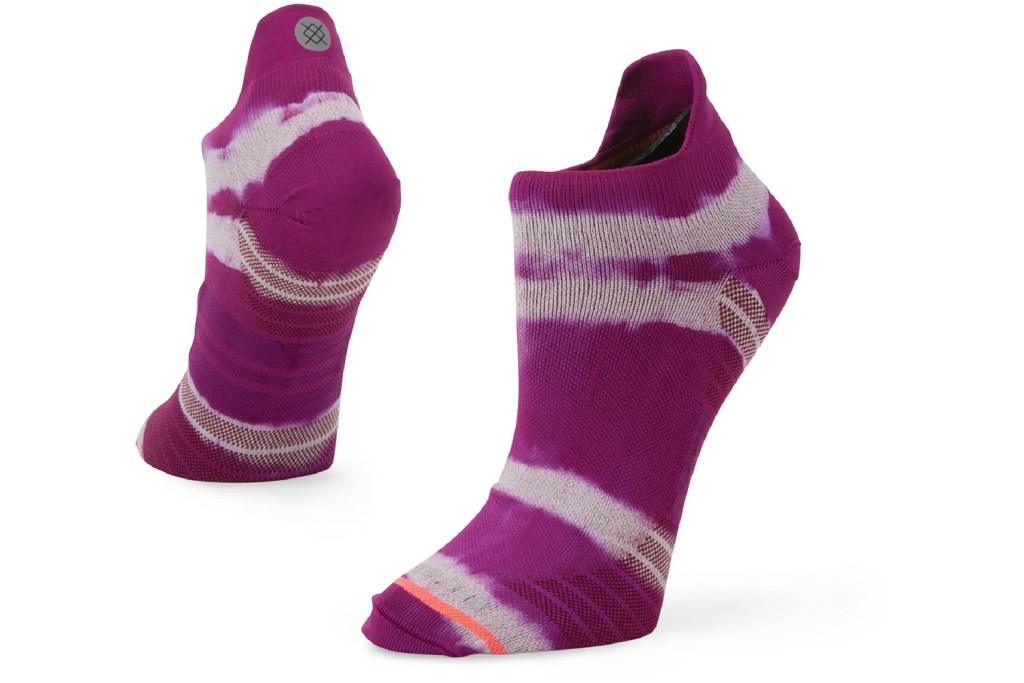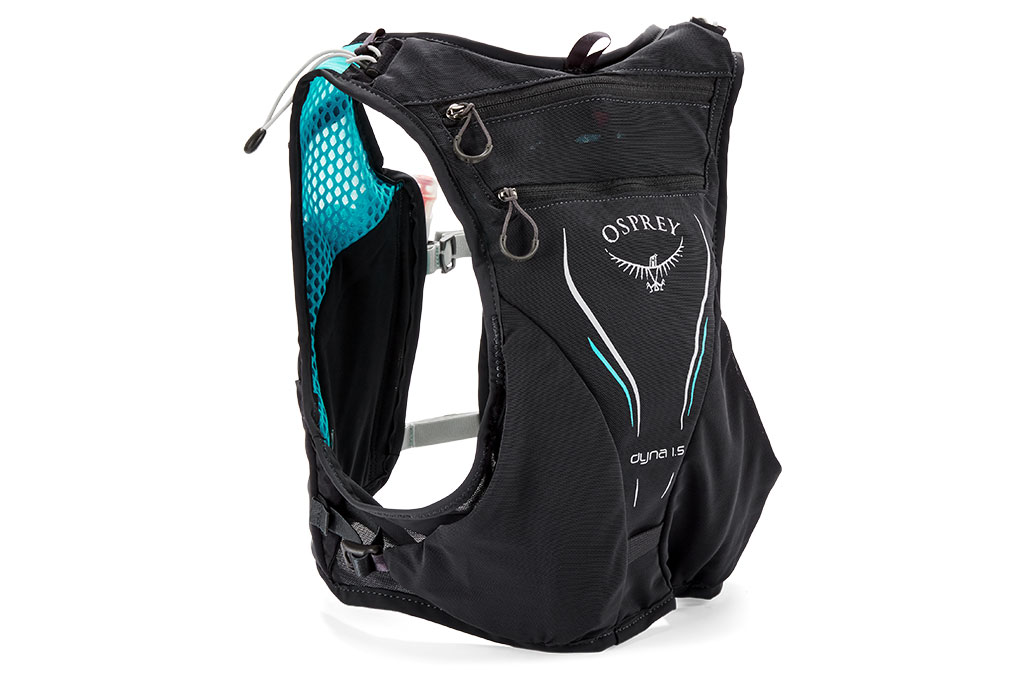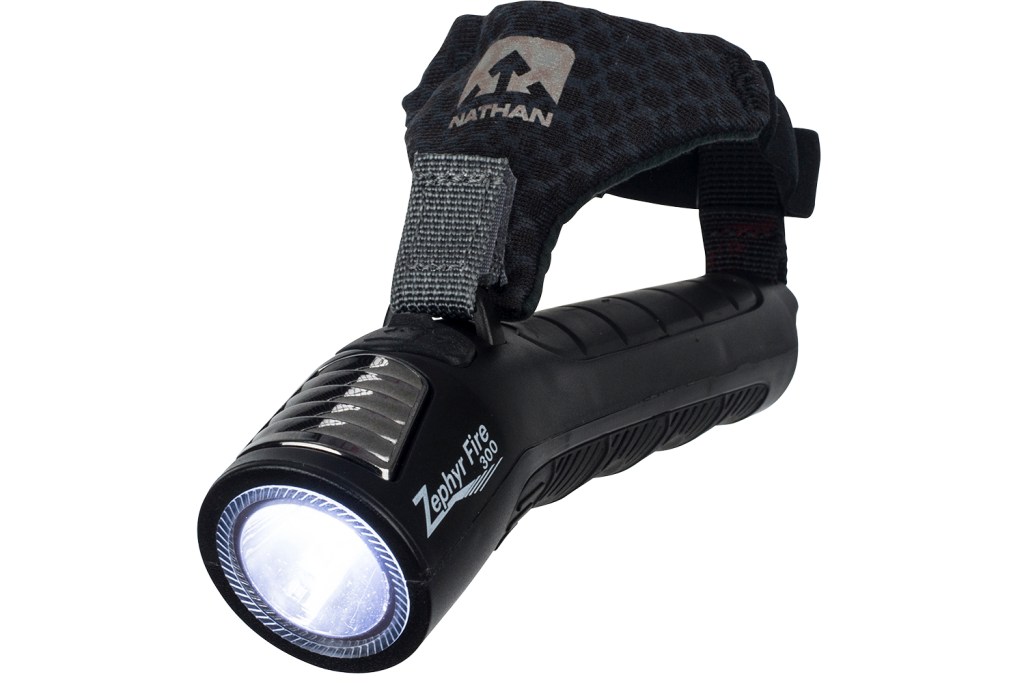As an elite ultrarunner sponsored by The North Face, Hillary Allen is never short on gear. But her most valuable trail accessory? “I will not go anywhere without a second hair tie,” Allen said.
For Allen, the simple, metal-free elastic band also serves as a temporary fix if a shoelace snaps in the alpine. Or worse. In early June, Allen and a friend set out to run Mount Baldy in California’s San Gabriel Mountains. Just below the 10,065-foot summit, Allen’s companion smashed his foot into a rock, breaking a toe 5 miles from the trailhead. Crisis? Hardly. Allen used her surplus hair tie to secure the fractured digit to its healthy neighbor. Toe stabilized, they were able to run out.
We asked Allen and other trail runners for the accessories—or rather, essentials—they deem worth the trail weight.
Black Diamond Distance Z Trekking Poles

Trekking poles on a run? It might be something you need after all.
Last year, a fall in Norway left Allen with 12 broken bones. “Early in my recovery, I had trouble with proprioception and balance,” she said. “Poles were a lifesaver for me to get my bearings again on the trail.” The Black Diamond Distance Z Trekking Poles feature a collapsible design that makes them easy to stow when not in use. Another Allen trademark: Carrot sticks tucked into her pockets on training runs. “The fresh crunch is a great palate cleanser,” she said.
Stance Downhill Tab Socks

Not just any socks. Stance’s Downhill Tab Socks keep your feet dry and blister free.
A year before climbing Mount Kilimanjaro with Outdoor Afro, Brittany Leavitt began trail running at home in Washington, D.C. “I don’t do well in the heat, and the humidity in D.C. can be hard,” Leavitt said. Enter the Stance Downhill Tab Socks. The blend of cotton, nylon and polyester knit allowed her feet to breathe and remain dry, while a seamless toe box eliminated blister-causing friction points.
Osprey Dyna 1.5 Hydration Vest

Osprey’s Dyna 1.5 Hydration Vest fits just right and carries everything you need.
“The best gear meets my needs, in my situation,” said Maricela Rosales, the Outdoor Brands Coordinator for Latino Outdoors. With her short, broad torso, the Osprey Dyna 1.5 Hydration Vest stays put better than other hydration devices. The 1.5-liter reservoir keeps this LA-based runner hydrated while her hands remain free to assist on rocky scrambles. For extra sun protection, Rosales tucks lip balm and a REI Co-op Screeline Cap in the generous front pockets.
Nathan Zephyr Fire 300 Hand Torch

For predawn starts, you might want to add Nathan’s Zephyr Fire 300 Hand Torch to your list.
At home in Marin County, California, renowned ultrarunner Dean Karnazes usually clocks a marathon before breakfast. That means 3:30am starts. He dons a headlamp, then carries the Nathan Zephyr Fire 300 Hand Torch to expand his peripheral vision. Another Karnazes essential? He helped develop SOLE Performance Medium Insoles to lessen joint and ligament damage from serious mileage. The underfoot cushion also benefits runners with larger builds. “Every extra pound you carry adds pressure on your ankles and knees,” Karnazes said. “Insoles help with impact resistance.”
SOL Emergency Blanket

Despite winning the 2018 Hardrock 100, Jeff Browning remains a student of the 100-mile course. In 2014, he was above treeline on 14,048-foot Handies Peak in Colorado’s San Juan Mountains when lightning forced him to hunker down for 70 minutes. “That taught me, don’t cut corners on gear,” Browning said. “Now my mountain running kit includes waterproof pants and jacket and an emergency blanket.” One that gets the job done: the SOL Emergency Blanket. Before this year’s Hardrock 100, Browning ditched his smartphone to save weight, leaving behind maps downloaded through the Gaia GPS app. Then, just past mile 70, he lost the trail—and added an hour to his time. Lesson learned once more.
